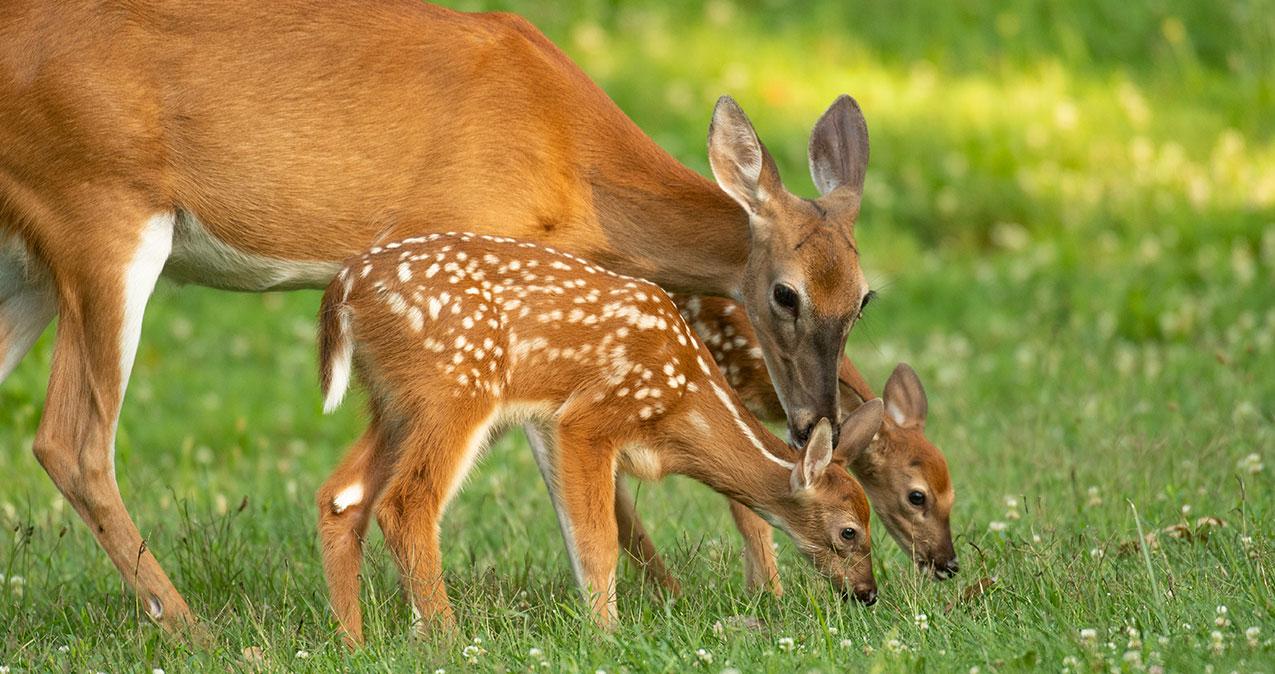Named for their large ears, mule deer are the most common type of deer in our foothills. Mule deer are herbivores. In spring and summer they feed on green leaves, herbs, weeds and grasses. In fall and winter they typically feed on twigs, various shoots and woody plants. They are especially fond of berries, grapes, mushrooms and alfalfa.
Deer are seasonal breeders, usually having one to four fawns in late spring or early summer. Mothers often leave their young while they go out and forage, so it is not concerning to see young deer by themselves. Mothers may aggressively attack if they see you with their young, and their fawns if they smells like humans.
How to deter deer
- Provide deer safe fencing around your yard. Fencing should be at least 8 feet tall, consisting of solid wood or openings no larger than 4 inches wide. The top surface should be flat (deer can become stuck in fences or impale themselves on top of fences).
- Stiff plastic netting can be used to cover individual trees and bushes
- Make your lawn “deer proof” by planting landscape deer do not like
- Use of motion detected lights and scarecrows can scare deer off
- Noise such as aluminum pie pans and tin cans rattling in the wind can scare them off
- Hang bars of soap, crushed garlic or human or dog hair in stockings from trees. Deer are very sensitive to smell
- Deer repellent formula: Blend 4 eggs, 2oz. of red pepper sauce and 2 oz. chopped garlic with enough water to make 1 quart. Spray plants with repellent
- Landscape with deer-deterring plants, trees and flowers
- For more tips on dealing with deer, download Deterring Peafowl and Deer


